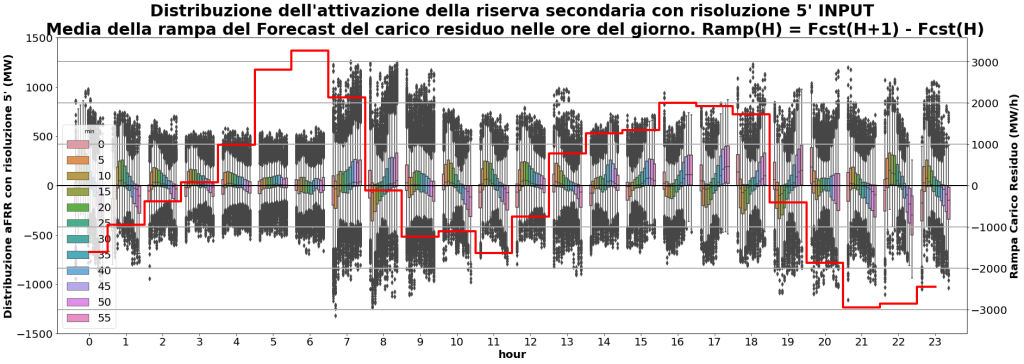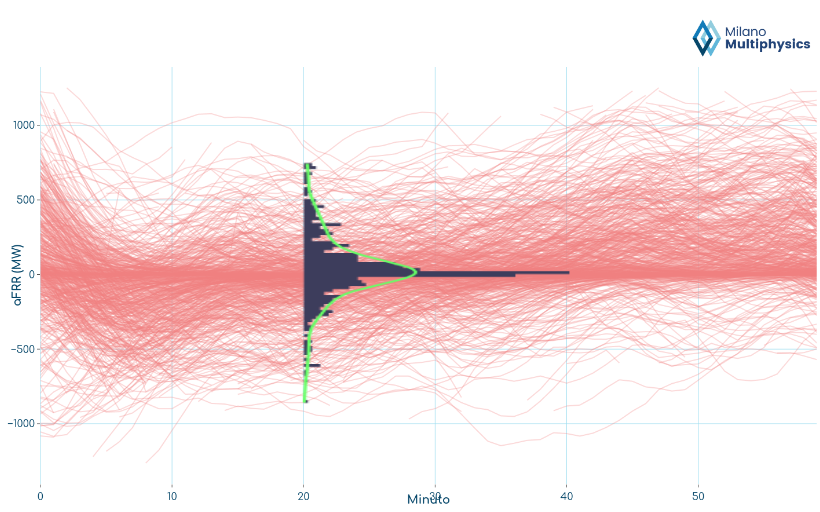The activation of the Automatic Frequency Restoration Reserve, aFRR, aims at compensating for the unbalance between demand and production in the national electricity system, restoring the power exchanges at the border and keeping the European frequency.
aFRR distribution has a high dependency on the hour of a certain day and also a strong correlation among minutes within a certain hour. That is inherently due to the electricity market and a substantial correlation between aFRR and the residual load ramp can be caught, as shown in the boxplot below.

In this context, MMP works with Terna in providing day-ahead forecasts of distributions per minute of the secondary reserve.
The main trends and behaviours that characterise the aFRR distributions are captured by the principal components of the PCA.
Thus, KNN is used to localise PCA coefficients in the neighbours space of forecast exogenous variables, defined as the hyper-space of forecast residual load and its correspondent backwards and forwards ramps.

Forecasted secondary reserve distributions are computed by sampling from ND-KDE of localised coefficients.

